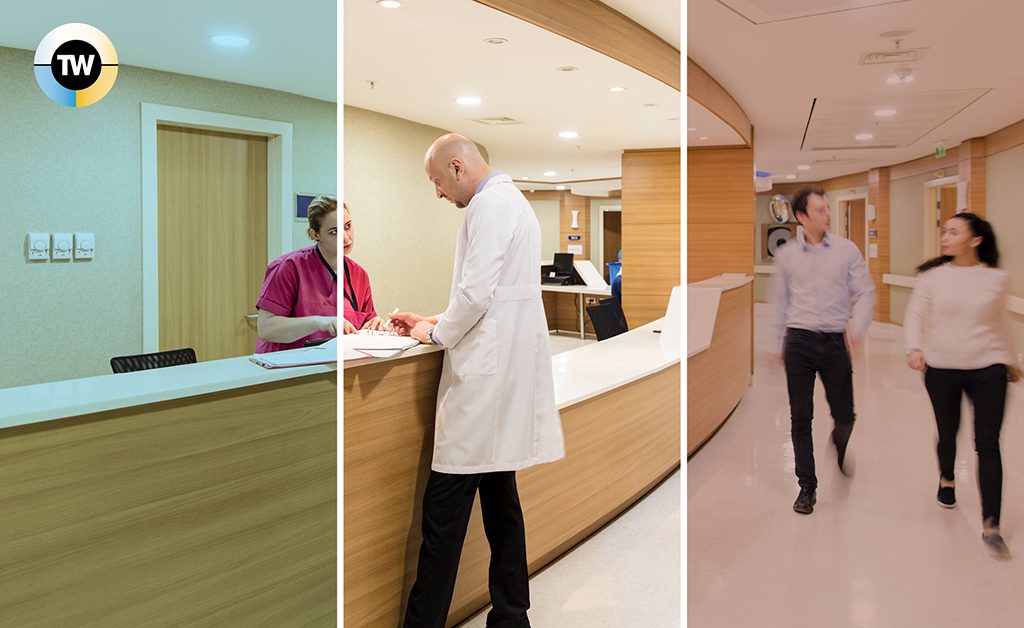How Tunable White Lighting Keeps Nurses Healthy
 Nurses work around the clock.
Nurses work around the clock.
However, the night shift does present several challenges for nurses beyond adjusting their sleep schedule, personal lives and consumption of caffeinated beverages.
In fact, studies show that people who work when the sun goes down tend to have higher risks of cancer.
While the link between cancer and working when the sun goes down is not fully understood, a growing possibility for helping address the dilemma could rest in the overhead lights that illuminate nurses’ workspaces.
Thanks to record advancements in LEDs and lighting controls, nurses, doctors and physicians are now using tunable white lighting technology to address several medical and therapeutic conditions in patients.
The same lighting technology can also be used to keep nurses and other caregivers healthy and alert.
How light controls our bodies
Sleep patterns are regulated by our body’s circadian rhythm, which comprises the physical, mental and behavioral changes that occur in all of us over a 24-hour cycle.
The rhythm an automatic, built-in mechanism that, depending on the lightness or darkness of our soundings, tells us what and when to do certain things, like when to go to sleep and wake up.
Sunlight has this influence because of its blue light spectrum, which suppresses melatonin, a hormone that, at its highest level, makes us sleepy and controls our daily sleep-wake cycles.
That’s why hospitals are often lit with this kind of light. Blue light exposure suppresses melatonin and helps keep medical staff awake, productive and alert, especially those who work overnight.
But there’s a catch.
Melatonin is also an antioxidant—or free radical scavenger—that helps prevent cell damage from free radicals in the body. Free radicals are naturally occurring chemicals throughout the body. At high levels, they have been linked to cancer.
Thus, the predicament: Finding the right kind of lighting that can achieve the same or better level of alertness of staff at night without suppressing their melatonin levels.
How tunable white lighting helps nurses
The RPI’s Lighting Research Center has been working to solve this, performing a series of experiments the last several years with red light at night.
Using safety goggles fitted with red lights, dim white lights or bright white lights, subjects were tested for reaction times.
The results of these laboratory studies found alertness in red light conditions to be equal or better than the bright white light condition and far superior to the dim white light condition. The bright white light lowered melatonin levels, while the red light did not.
This conclusion indicated it’s possible to maintain alertness in shift worked without affecting their circadian phase.
This can be done by installing a tunable white lighting system.
White tunable lighting is the ability to control a light source’s color temperature output to emulate natural patterns of sunlight. Color temperature can be used to accentuate mood or energize people—promoting wakefulness during the day and sleep at night.
Research shows that nurses at facilities with tunable white lighting systems have reported more comfortable light in their stations, reducing their consumption of coffee during shifts, feeling more energized and using the lighting as a tool for improved patient care.
Where tunable white lighting should be installed for nurses
At present, lighting in most hospitals, rehab facilities and nursing homes center on general illumination.
Important visual functions—like seeing what you’re doing and where you’re going without tripping—were the primary reasons why lighting was installed.
But improved lighting systems can now be therapeutic—not just for patients, but for nurses. To do this, it’s key to improve lighting in various areas, especially hallways and nurse stations.
While patient rooms line the wall, nurse stations are in the center of the building or hospital wing and get little, if any, natural light. These areas operate 24/7 and nurses could greatly benefit from tunable lighting to make up for the daylight deficit.
Hallways—most of which have few, if any windows—get even less light despite being a high traffic foot area for nurses.
With tunable lighting, the high-intensity, cool light common in these areas, which suppress melatonin, can be adjusted for daytime and nighttime shift workers to help improve their health, reduce their probabilities of illness and keep them productive.
Want More?
If you have more questions, we have more answers:

